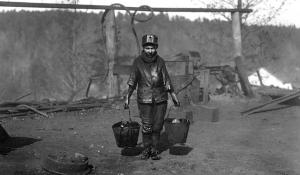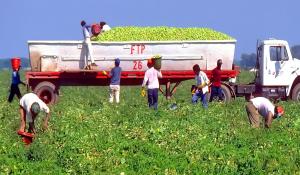
The Cocoa Barometer is a biennial report on the current state of sustainability in the cocoa farming industry. In 2015, the report found that West African cocoa farmers were living well below the global poverty level of $2/day; chocolate company mergers are increasingly consolidating most of the power to just a handful of chocolate companies; and younger farmers are less interested in cocoa farming, leading to an increase in the average age of cocoa farmer. Since the publication of the 2015 report, much has changed in the cocoa industry.
In 2015, Tulane University, under contract with the US Department of Labor, published a report revealing that the number of children working in cocoa fields increased over the 15+ years companies, governments, and activists have been working on this issue. Then, beginning in 2016, farmers were hit with record low cocoa prices as well as an oversupply of cocoa in the market. However, since there is little transparency or accountability in the industry, it is unclear what the true size and scope of the problems are, and how effective current approaches to addressing farming income and child labor are.
In light of these updates, the 2018 Cocoa Barometer notes that continuing with ‘business as usual’ is nowhere near sufficient to address all of the pressing problems that face farmers and the industry.
Some key points from the 2018 Cocoa Barometer include:
- Scale of problem is larger than solutions: Although chocolate companies and producing governments have been working together to try to address sustainability in cocoa supply chains, their efforts have not matched the size of the problem. Most sustainability programs only effect a small percentage of cocoa farmers, and due to a lack of publicly available information, it’s unclear how much of an impact these programs have made. Meanwhile, certification, although a helpful tool for both companies and consumers, has not reached as many cocoa farmers in West Africa as industry and activists once hoped it would, and on its own cannot solve the underlying structural issues related to poverty that farmers face.
- Low cocoa prices and a need for living income: The price of cocoa dropped significantly in 2016, from above $3,000 to below $1,900 in a matter of months, and has not fully recovered. Due to low cocoa prices, companies are saving billions of dollars in purchasing costs; meanwhile, farmers are hit hard by low market prices. Cocoa farmers were already living below the poverty line before the crash, and the fall in income makes clear that more needs to be done to ensure that cocoa farmers can earn a living income from their work.
- Large scale deforestation: Over the past year, deforestation has been a hot-button topic in the cocoa industry. Cote d’Ivoire and Ghana have lost most of their primary forest areas to legal and illegal deforestation. At this point, more than ninety percent of West Africa’s original forests are gone. An estimated 30-40% of cocoa from Cote d’Ivoire comes from illegal plantations in deforested areas. In 2017, the global cocoa sector announced the Cocoa and Forests Initiative, a multi-stakeholder commitment to combat deforestation in Cote d’Ivoire and Ghana. Although this is a promising first step, it is crucial that the non-deforestation commitments are expanded to other cocoa producing regions as well.
RECOMMENDATIONS AND NEXT STEPS
Although some progress has been made in the cocoa sector, overall, the entire industry still has much to do to achieve companies’ stated sustainability goals and support farmers. Some recommendations from the Cocoa Barometer include:
- Implementing prices that provide farmers a living income;
- Prioritizing elimination of structural poverty as a sustainability commitment;
- Expanding current deforestation commitments to a worldwide moratorium on deforestation;
- Developing and implementing transparency and accountability mechanisms in cocoa growing countries and throughout the cocoa supply chain.
It’s clear that current sustainability efforts will not fix the problems plaguing the cocoa industry. Companies and governments need to reevaluate their current programs and commitments, and approach new solutions with an increased sense of urgency and ambition. While some of the major companies have announced investments in new sustainability programs, others still lag behind in sharing what their plans are. One of the biggest laggards in the industry is Godiva.
The cocoa industry is at a crucial turning point right now. Join us in asking Godiva to not only step up their commitments to meet their competitors’, but to become a leader on this issue – take action today!
Read the full Cocoa Barometer here.
The Cocoa Barometer is published by the VOICE Network, an international consortium of NGOs that work in the cocoa sphere. Green America, International Labor Rights Forum, and Oxfam America are American members of the VOICE Network.






